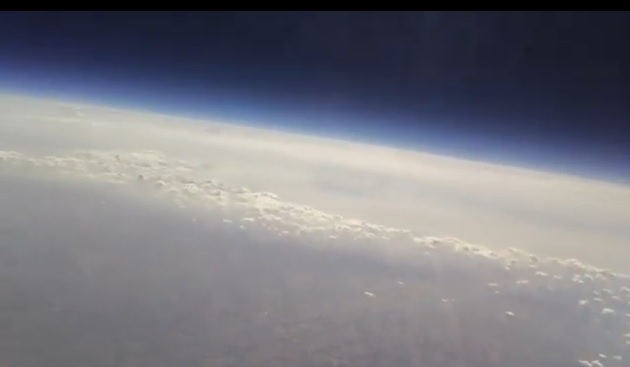It’s been an eventful few weeks for the student-led team from Western University’s Centre for Planetary Science and Exploration (CPSX).

They’ve been trying to track down a high-altitude balloon (HAB) that was launched into space one year ago on May 29, 2018. It was done in an effort to study Earth’s stratosphere to get a better sense of what microbial life could be living there.
That launch was a success, but the retrieval not so much.
The balloon was supposed to land about 70 km from the launch site, but officials lost the signal of the balloon’s GPS tracking system, which led them to believe the project was dead, along with the payload which included facts, findings, and footage that had been tracked over the last 12 months.
For weeks, the students searched the potential crash area for the HAB with help from members of the London Amateur Radio Club, but to no avail. That included help from club members Doug Elliot, Dave McCarter and Tom Pillon.
Then out of the blue last week, Elliot received a call from a farmer, who found a strange orange box attached to a deflated balloon in his field, complete with invaluable contact information.
That orange box was the payload.
- Train goes up in flames while rolling through London, Ont. Here’s what we know
- Budget 2024 failed to spark ‘political reboot’ for Liberals, polling suggests
- Wrong remains sent to ‘exhausted’ Canadian family after death on Cuba vacation
- Peel police chief met Sri Lankan officer a court says ‘participated’ in torture
The HAB was recovered about five kilometres from the projected path and the student scientists were elated, to say the least.
“I’m incredibly excited about this discovery,” says CPSX director Gordon Osinski. “This kind of interdisciplinary and problem-based research is the way of the future and it’s been amazing to watch this group of students learn and grow throughout this process.”
The HAB initiative team members, which include Matthew Svensson and Liam Innis from the department of earth sciences, Alexis Pascual from the department of electrical and computer engineering, Mohammed Chamma from the department of physics & astronomy, and Paul Salvatore from the department of computer science, are still evaluating data from the mission.
Officials have confirmed that the tools packed within the payload successfully measured radiation, carbon dioxide, ozone and ultraviolet (UV) radiation in the stratosphere, and captured some extraordinary video footage.
The students are now planning their next launch, in collaboration with the Students for the Exploration and Development of Space Canada and the Canadian Space Agency, to sample microbial aerosols with a much larger stratospheric balloon.
The launch is scheduled for August in Timmins, Ont.








Comments